Table of Contents
Adjacent angles are two angles that have a common vertex and a common side. The vertex of an angle is the endpoint of the rays that form the sides of the angle. When we say common vertex and a common side, we mean that the vertex point and the side are shared by the two angles. The measure of rotation of a ray, when it is rotated about its endpoint is known as the angle formed by the ray between its initial and final position.
At times, in geometry, the pair of angles are used. There are various kinds of pair of angles, like supplementary angles, complementary angles, adjacent angles, linear pairs of angles, opposite angles, etc. In this article, we are going to discuss the definition of adjacent angles and vertical angles in detail.
SOHCAHTOA – Definition & Example
Derivative of tan x, sec x & tan x More
Rectangular To Polar Calculator
What Are Adjacent Angles Or Adjacent Angles Definition?
The two angles are said to be adjacent angles when they share the common vertex and side. The endpoints of the ray from the side of an angle are called the vertex of an angle. Adjacent angles can be a complementary angle or supplementary angle when they share the common vertex and side.
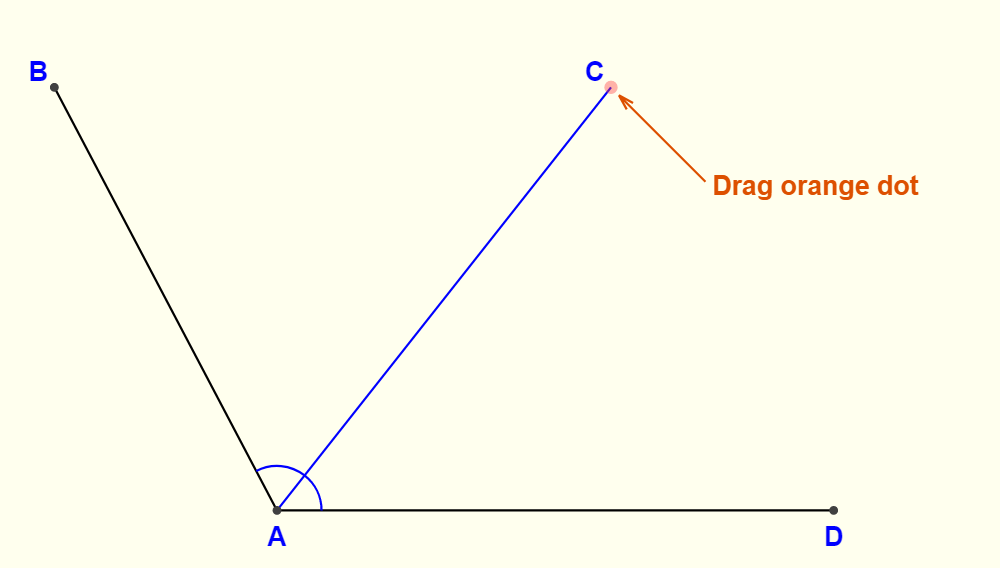
In the figure above, the two angles ∠BAC and ∠CAD share a common side (the blue line segment AC). They also share a common vertex (point A). They are therefore termed ‘adjacent angles’. Obviously, the larger angle ∠BAD is the sum of the two adjacent angles.
They do not overlap
Two angles that overlap, one inside the other sharing a side and vertex in the figure on the right, the two angles ∠PSQ and ∠PSR overlap. Although they share a common side (PS) and a common vertex (S), they are not considered adjacent angles when they overlap like this. Adjacent angles must be next to each other, not one on top of the other.
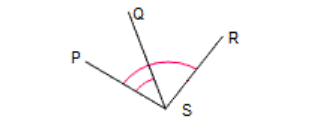
Another way of defining them is: “two angles that share a side and a vertex, but do not share any interior points”.
In Polygons
A polygon showing its interior angles, and a label pointing to two that are adjacent to another use of the term refers to the interior angles of polygons.
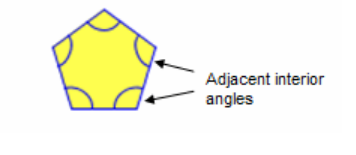
Any two interior angles that share a common side are called the “adjacent interior angles” of the polygon or just “adjacent angles”. Here the word adjacent is used in its ordinary English meaning of “next to each other”.
Adjacent Supplementary Angles
The two angles will change so that they always add to 180°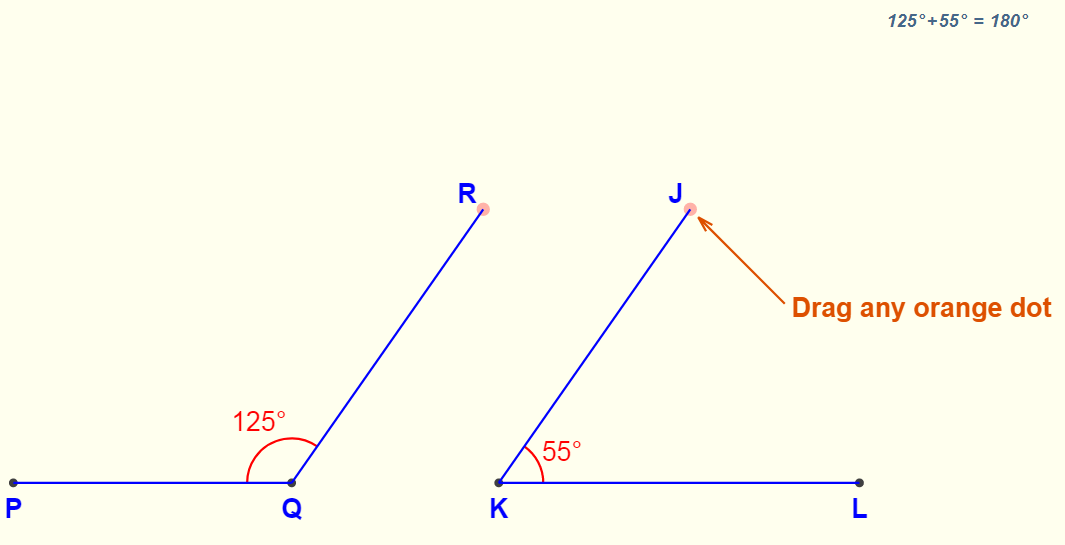
In the figure above, the two angles ∠PQR and ∠JKL are supplementary because they always add to 180°
Adjacent Complementary Angle
Two angles together are angle pairs. Sometimes, the measures of these angles form a special relationship. One special relationship is called complementary angles. Complementary angles are angle pairs that add up to exactly 90o. In other words, when put together, the two angles form a right angle.
Below are some pairs of complementary angles.
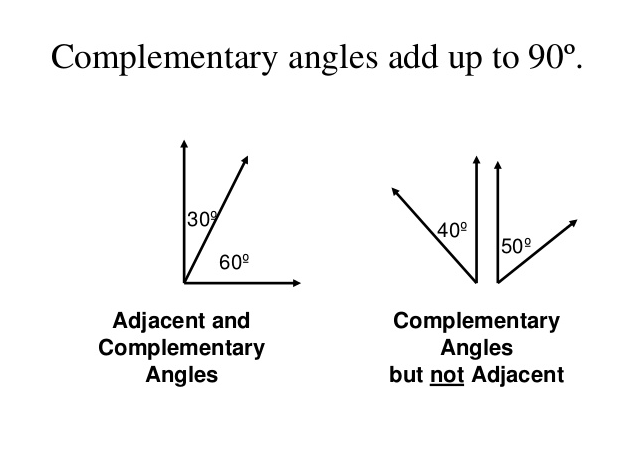
Non-Adjacent Angle
They share the same vertex and the same common side.

In the figure, ∠1 and ∠3 are non-adjacent angles.
They share a common vertex, but not a common side.

Angles ∠1 and ∠2 are non-adjacent angles.
They share a common side, but not a common vertex.
FAQs
Is Adjacent Angle Equal To 180?
A And B Are Adjacent Angles. Adjacent Angles Add Up To 180 Degrees. These Add Up To 180 Degrees (E And C Are Also Interiors). Any Two Angles That Add Up To 180 Degrees Are Known As Supplementary Angles.
What Are Adjacent Sides And Adjacent Angle?
Adjacent Sides. Definition: Two Lines That Meet At A Polygon Vertex. Usually Found In Triangles And Other Polygons, Two Of The Sides That Meet At A Vertex Of The Polygon Are Called Adjacent Sides.
Can 2 Obtuse Angles Be Adjacent Angles?
Can Two Obtuse Angles Be Adjacent? Yes. Two Obtuse Angles Can Be Adjacent Angles. In Other Words, It Is Between A Right Angle And A Straight Angle.
Are Adjacent Angles Always Equal?
Vertical Angles Are Always Congruent, Which Means That They Are Equal. Adjacent Angles Are Angles That Come Out Of The Same Vertex. Adjacent Angles Share A Common Ray And Do Not Overlap.
Can Two Adjacent Angles Be Supplementary?
Adjacent Angles Are Two Angles That Share A Common Vertex, A Common Side, And No Common Interior Points. If Two Angles Form A Linear Pair, The Angles Are Supplementary. A Linear Pair Forms A Straight Angle Which Contains 180º, So You Have 2 Angles Whose Measures Add To 180, Which Means They Are Supplementary.
Can 2 Adjacent Angle Be Complementary?
Two Adjacent Angle Can Be Complementary Too If They Add Up To 90°. In A Right Triangle, The Altitude From A Right-angled Vertex Will Split The Right Angle Into Two Adjacent Angle; 30°+60°, 40°+50°, Etc. Those Adjacent Angles Are Complementary. Two Adjacent Angle Can Be Supplementary Too, If They Add Upto 180°.
SOHCAHTOA – Definition & Example
